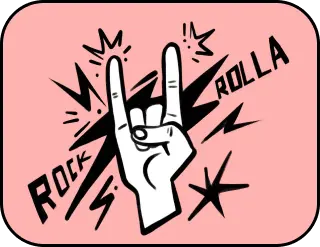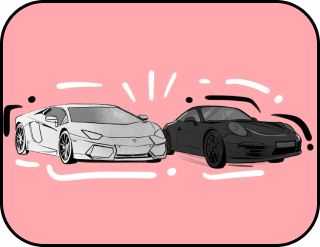Category: Materialization technologies
The story of fireworks from gunpowder to drones
“When fireworks burst into the sky, no one
looks at the stars anymore”
writer Maria von Ebner-Eschenbach
BOOM…
Long before the greatest and most magnificent city of Asia existed, the people of Ancient China gathered around a fire, pondering how to protect themselves from evil spirits that lurked near their homes and threatened the health of their children. Right in the middle of their conversation, a sudden explosion cracked through the night: a bamboo stalk, accidentally caught among the dry branches in the fire, couldn’t withstand the intense heat and burst apart.
Today, people might hardly notice such a thing. After all, the sap inside the bamboo simply heated up and evaporated, and the steam filling the empty space caused the stalk to rupture with a loud crack. But for the people under the Celestial Empire, this “explosion” made a huge impression. They believed it was a powerful sign: evil spirits surely wouldn’t be pleased by such a roaring sound.
Thus was born the “paochak” — exploding bamboo — the distant ancestor of the modern-day firework.
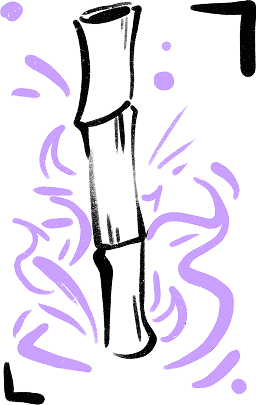
BOOM. BOOM.
Daoist monks in the ninth century were tirelessly searching for the secret to human immortality — but instead, they invented firecrackers. More precisely, they created the very first prototypes: explosive mixtures made from charcoal, saltpeter, and sulfur packed into hollow bamboo tubes. The monks learned about bamboo’s love for explosions thanks to their ancestors, who regularly used paochak in religious ceremonies. However, these “Daoist firecrackers” produced a louder bang and kept burning for some time after the blast.
Many people genuinely believed that such inventions could bring good luck. Since you can never have too much luck, these explosive experiments continued and grew bigger. Over time, paper tubes with fuses replaced bamboo stalks. This invention was quite dangerous — exploding containers flew randomly through the air, sometimes landing on someone’s head or setting houses on fire. Undeterred, the clever Chinese solved this problem too: they added guiding elements to the design and created the first exploding rockets.
The 12th century marked a breakthrough for the monks when they developed a mixture of gunpowder, aluminum, magnesium, and sodium — and “heavenly lights” gained color. But not just for entertainment: these colors were meaningful signals sent into the Universe. To attract luck, red fireworks were ignited, while green ones were meant to boost health.
By the 13th century, the Chinese realized fireworks could scare off not only evil spirits but also evil humans. Thus, “Chinese arrows” were invented for warfare. The emperor’s subjects carved dragon shapes from wood, packed them with gunpowder, and set them ablaze as they launched into the air. The explosive force moved the dragons and caused panic among enemies.
A century later, in the Ottoman Empire, fireworks took on a new role: they lit the way for soldiers during night marches.
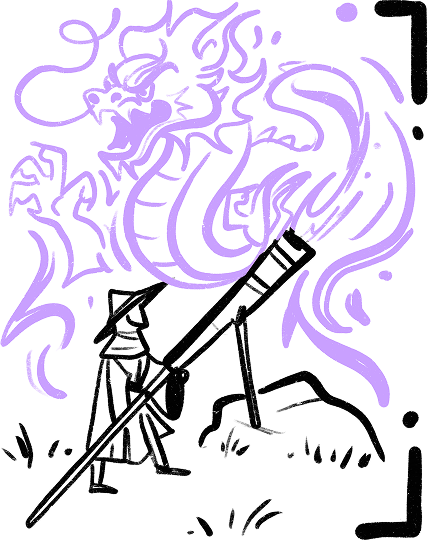
BOOM. BOOM. BOOM.
The Chinese — a generous people — saw their invention quickly gain worldwide fame and travel all the way to Europe. But unlike the Chinese, Europeans didn’t believe in evil spirits, so for them, fireworks became simply a curious form of entertainment. Italy was the first European country to welcome fireworks, thanks to the traveler Marco Polo, who brought this crackling invention to Venice along with all the secrets of gunpowder. The fiery displays instantly captivated the people — soon they became a popular and dazzling feature of the famous Venetian carnivals.
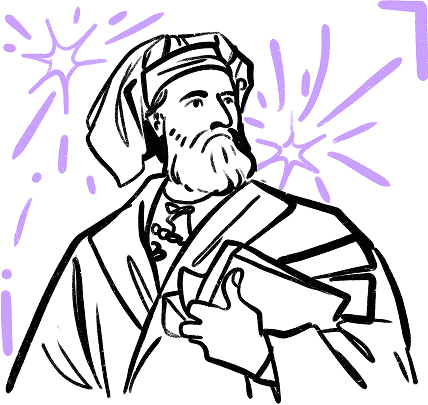
During the Renaissance, spectacular shows were a collaborative effort involving pyrotechnicians, artists, architects, locksmiths, and carpenters. Their combined work produced intricate models of palaces, theaters, arches, and mythical creatures. These elaborate decorations amazed the audience, highlighting the beauty of the fiery bursts and giving the performances a special meaning. The most famous European fireworks display of the era was launched at the wedding of England’s King Henry VII. Later, these fiery shows began to serve political purposes — attracting crowds to meetings and speeches. Because such entertainment was costly, organizers used fireworks to showcase their prestige and social status.
From the 15th century onward, the tradition of launching fireworks spread across the entire European continent. Local scientists began conducting active research to improve the explosive mixtures and add new properties that would make fireworks truly precious. Italy and Germany even established two pyrotechnic schools where the art of creating and using fireworks was taught, along with experimental research. In 1550, a special pyrotechnic formula was developed — one that remains in use for making fireworks to this very day. By the mid-19th century, fireworks went into mass production. Anyone could buy colorful fireworks at a store and delight themselves or their loved ones with a small pyrotechnic show right in their own backyard.
BOOM, BOOM, BOOM, BOOM!!!
Since the 19th century, fireworks have exploded into rapid evolution thanks to scientific breakthroughs. Through countless experiments, scientists discovered that by adding salts of calcium, potassium, barium, and various metals, they could unleash a riot of brighter, richer, and wilder colors. Want blazing red? Just toss in some strontium. Craving a blazing yellow? Sodium’s your buddy. And for that deep, mysterious blue that makes you say “Whoa,” copper is the secret ingredient. This kaleidoscope of colors transformed fireworks into the ultimate must-have at every big celebration — fiery cascades lighting up the skies as the VIPs of every party for centuries.

Nowadays, fireworks are the ultimate mashup of science, art, and tech. Modern displays can be controlled by computers to conjure up mind-blowing spectacles that make your brain do backflips. Enter programs like Fireworks Studio and Action Base Fireworks — your digital wands for pyrotechnic wizardry.
Fireworks Studio lets you craft the entire fireworks show on your computer screen in stunning 3D realism. You pick the soundtrack, set the launch points, angles, timing, speed, and exact direction of every explosive burst. Meanwhile, Action Base Fireworks gives you the reins to launch the show manually or automatically — just upload your script as a text file with precise timings, module numbers, channels, and product names, and watch the magic unfold.
But wait, there’s more! With these slick programs, you can draw patterns, shapes, letters, even simple animations in the night sky. Fancy a fiery smiley face? No problem. Want to spell out your name with explosions? Easy. Sure, this tech wizardry costs a pretty penny, but hey, if you want to show off, your modern-day fireworks can grant pretty much any explosive wish you dare to dream — within reason, of course.
And for those tree-hugging souls worried about the environment and tired of smoky, metal-and-salt-spewing explosions, science’s got your back. Special eco-friendly formulas now exist, minimizing pollution while still letting you soak in the full glory of a dazzling pyrotechnic spectacle.
BOOM, BOOM, BOOM-TOWN!!!
Modern pyrotechnic shows around the globe are locked in an epic battle of scale, color, duration, and spectacle. The biggest fireworks extravaganzas go off every New Year in Sydney, London, and Dubai. Fireworks are also the heart and soul of countless cultural traditions: in the USA, they blaze across the skies on Independence Day; in India, they light up the Festival of Lights; and in Canada, they celebrate the National Day with fiery flair. Some fireworks have even etched their names in history books — and Guinness World Records.
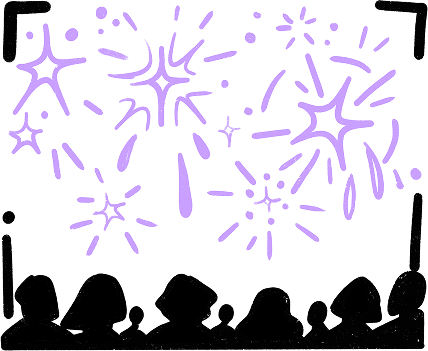
On December 31, 1999, Sydney put on the most monumental fireworks show in history. Before the pyrotechnic symphony began, Sydneysiders enjoyed a dazzling water show, breathtaking aerial acrobatics, and an ancient Aboriginal ceremony banishing evil spirits from the harbor. Then the sky exploded with color above the iconic Harbor Bridge and the Sydney Opera House, lighting up the night with a spectacular grand finale.
The world record-holder for the largest firework exploded on July 15, 1988, over Lake Toya in Hokkaido, Japan. The payload weighed a staggering 700 kilograms, with a blast diameter stretching approximately 1.3 kilometers — a monstrous bloom of light and sound.
The longest firework in pyrotechnic history was the blazing “fire snake” launched in Malaysia in 1988. Pyrotechnicians fired up about 650 kilograms of gunpowder and a mind-boggling 3,338,777 firecrackers. The fiery serpent stretched 6 kilometers long, illuminating the night sky for an incredible 9 hours and 27 minutes.
The biggest aerial firework ever was Japan’s legendary “Tama.” In 1980, in the city of Fattatsu, a one-meter-diameter charge exploded into a chrysanthemum bouquet 600 meters wide. Launching this giant required a monstrous mortar weighing 3 tons and towering 4.3 meters tall.
In the early ’90s, British pyrotechnician Terry McDonald set the skies of Jersey Beach on fire by launching 39,210 rockets almost simultaneously — creating one of the fastest fireworks shows on Earth in just 15 seconds flat.
On August 4, 1992, the Florida Pyrotechnic Arts Guild (FPAG) “hung” the largest “fiery sun” over Idaho Falls. This blazing marvel spun in a circle, measuring a whopping 15.5 meters in diameter and burning fiercely for 3 minutes and 45 seconds.
And on November 10, 2012, Kuwait threw a $15 million fireworks bash for the 50th anniversary of its Constitution — the most expensive, and arguably one of the most beautiful, fireworks shows ever witnessed on the planet.
In recent years, the Guinness World Records added two more pyrotechnic legends.
The first one lit up the sky in 2020 at the annual winter carnival in Steamboat Springs, Colorado. The firework rocket weighed a whopping 1.3 tons — about 1270 kilograms — with a diameter of 1.58 meters. The Steamboat Fireworks team launched the beast from an 8-meter steel tube buried deep inside Emerald Mountain near the town. The rocket shot off at a blazing 480 km/h and exploded in a thunderous burst about 1.5 kilometers above the ground.
The second record-breaking firework dazzled the world on New Year’s Eve 2024 in Ras Al Khaimah, UAE. The show stretched along a 4.5-kilometer shoreline, between the artificial Al Marjan Archipelago and the Al Hamra district. But this wasn’t just fireworks — the spectacle included over a thousand pyrotechnic LED drones dancing in the sky and light aircraft performing jaw-dropping aerobatics. The entire performance was perfectly synced to a specially composed musical score crafted just for the event.
MEGA-BOOM!!!
When we talk about fireworks, the word “salute” often pops up as a synonym. But even though fireworks and salutes are pyrotechnic cousins, their purpose and meaning are worlds apart. The main difference? Fireworks don’t involve artillery volleys. The French word “salut” means “greeting,” and a salute is all about honoring important people or historically significant events.
Originally, salutes were part of military parades — a series of blank shots fired from cannons into the sky. These days, such volleys are often used to welcome warships or highly important foreign delegations.
The most powerful and grand salute in history exploded over Moscow in 1945, celebrating the end of the Great Patriotic War. One thousand anti-aircraft guns fired 30 volleys, each accompanied by bursts of colorful rockets and beams from 160 anti-aircraft searchlights crisscrossing the night sky like lasers from the future.

Today, festive salutes are crafted from hundreds of fireworks. Pyrotechnicians use special salute launchers and carefully clear the launch area — sometimes even cordoning off entire streets to make sure the show goes off without a hitch.
Fireworks and salutes are deeply intertwined with technology and science. They evolve and innovate to dazzle us every time with breathtaking beauty, sparking a fiery sense of wonder and awe in all who watch.
Dark matter whispers secrets only geniuses can hear.
Thank you!


